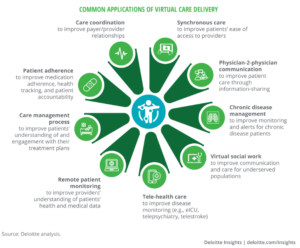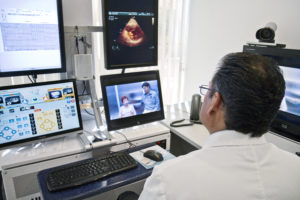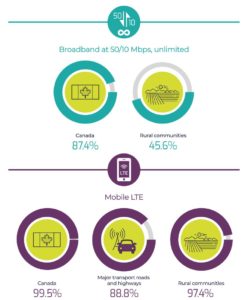Virtual health, also called virtual care, is a broad term that describes the use of information and communication technologies to provide health care to patients when the health-care provider and patient are not in the same location. One example is real-time “virtual visits” between patients and health providers using videoconferencing and mobile apps. Secure email to exchange information, telephone consults, online scheduling systems, and remote monitoring of vital signs like heart rate, blood pressure or temperature, are other examples of virtual health. Click the expandable menu below for articles about virtual health in Alberta.
Virtual Health is an Opportunity
Virtual health has an important role in rural and remote communities where access to health-care services can be challenging.
There are many different ways care can be delivered virtually.

Virtual health is convenient, reduces travel, and allows patients to see specialists close to home. Virtual health is an important tool to improve rural health-care access and the health of rural communities.
Virtual health describes the use of information and communication technologies to provide health care to patients when the clinician and patient are not at the same location. – Totten et al, 2016
Making virtual health happen in rural areas is not easy. Virtual health requires reliable, high-speed internet. Rural residents also need to learn about the benefits of virtual health and how to use virtual health tools. Other challenges for virtual health emerge from the way health professionals are regulated and paid.
Despite these challenges, virtual health will continue to grow as technology advances and more people become more comfortable with virtual health.




